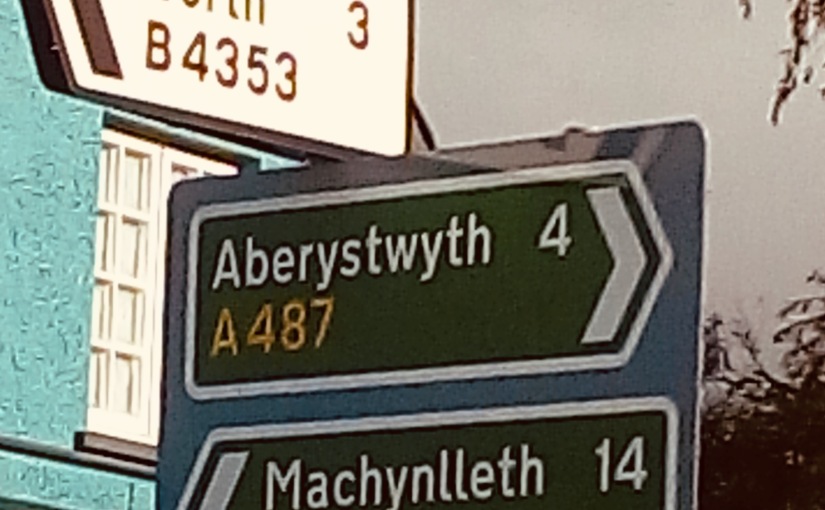Most English place names consist of two parts: a specific identifier and a general description. There are exceptions, of course, from Torpenhow Hill to Milton Keynes, but the usual pattern is for a split in the middle: Ox/ford, Cam/bridge, Man/chester, Hudders/field. The second part tells you what there is (or was, once) there, and the first is a specific identifier to distinguish it from all the other fords, bridges, chesters or fields.
Welsh place names work on exactly the same system. A typical place name has a generic part and a specific part. But in Welsh adjectives and possessives come after the noun, not before it as they do in English. So the generic comes before the specific, at the front rather than at the end.
You can draw up a table of equivalences, not that the actual names have much relevance after a few centuries of history. So that’s all plain sailing.
| Aber- | -mouth |
| Rhyd- | -ford |
| Tre- | -ton |
| Caer- | -chester |
| Llan- | -church |
| Maes- or Ma- | -field |
| Pont- | -bridge |
The problem arises because an English speaker focusses on the first half of a place name. We think Manchester to distinguish it from Winchester or Barchester or all the other -chesters (and -casters) on the map. In Wales this backfires completely. If you think Abertawe your brain is going to group that with Aberteifi and Aberystwyth and all the others. An English visitor will see the names Trefach and Trefnant as closely similar, whereas for the Welsh they are as different as London and Swindon.
So the incomer has to train their brain to do what the locals do instinctively. When you come across a place name, focus on the second part. Think Caerdydd, Aberystwyth, Llandovery, Rhydychen …
And the map will be much easier to get your head round.
